
R ACHMANINOFFS C OMPLETE S ONGS
Russian Music Studies
Malcolm Hamrick Brown, founding editor
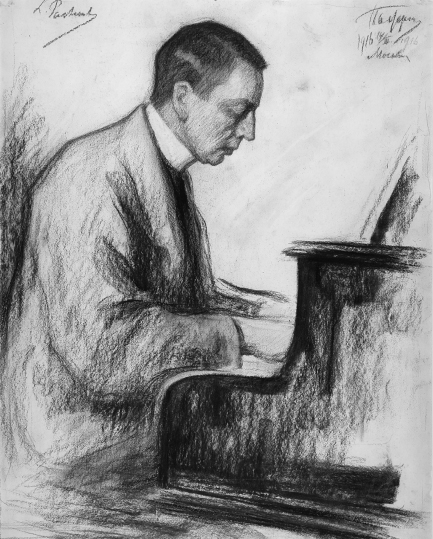
Rachmaninoffs Complete Songs

A Companion with Texts and Translations
Richard D. Sylvester
INDIANA UNIVERSITY PRESS
Bloomington & Indianapolis
Illustration on page iv: Leonid Pasternak.
Portrait of the composer S. V. Rachmaninov. Moscow, 1916.
The Pasternak Trust. All rights reserved. Reprinted by kind permission.
This book is a publication of
Indiana University Press
Office of Scholarly Publishing
Herman B Wells Library 350
1320 East 10th Street
Bloomington, Indiana 47405 USA
iupress.indiana.edu
Telephone 800-842-6796
Fax 812-855-7931
2014 by Richard D. Sylvester
All rights reserved
No part of this book may be reproduced or utilized in any form or by any means, electronic or mechanical, including photocopying and recording, or by any information storage and retrieval system, without permission in writing from the publisher. The Association of American University Presses Resolution on Permissions constitutes the only exception to this prohibition.
 The paper used in this publication meets the minimum requirements of the American National Standard for Information SciencesPermanence of Paper for Printed Library Materials, ANSI Z39.481992.
The paper used in this publication meets the minimum requirements of the American National Standard for Information SciencesPermanence of Paper for Printed Library Materials, ANSI Z39.481992.
Manufactured in the United States of America
Library of Congress Cataloging-in-Publication Data
Sylvester, Richard D., author, translator.
Rachmaninoffs complete songs : a companion with texts and translations / Richard D. Sylvester.
pages ; cm
Includes bibliographical references and index.
ISBN 978-0-253-35339-9 (cloth : alkaline paper) ISBN 978-0-253-01259-3 (ebook) 1. Rachmaninoff, Sergei, 18731943. Songs. 2. Rachmaninoff, Sergei, 18731943. SongsTexts. I. Title.
ML54.6.R18S95 2014
782.42168092dc23
2013040934
1 2 3 4 5 19 18 17 16 15 14
for
Nancy Ries
Contents
P REFACE
The Moscow public first learned of a young composer named Sergei Rachmaninoff in the spring of 1893, when the Bolshoi Theater announced production of his one-act opera Aleko. He was known before that to insiders at the Moscow Conservatory, where he performed some of his early piano works. An opera, however, based on Alexander Pushkins brilliant narrative poem Tsygany (The Gypsies, 1824), was an important musical event. By the time the young composer reached his twentieth birthday, on 2 April 1893, rehearsals were already under way.
Aleko was never imagined as a career-launching move, but that is what it turned out to be. It was composed in 1892 as a final diploma project at the Conservatory. The libretto, patchily contrived for pedagogical purposes by the Moscow critic and dramaturge Vladimir Nemirovich-Danchenko, invited comparison, in its verismo plot of jealousy and murderous revenge, with Mascagnis Cavalleria rusticana, a recent hit at the Bolshoi (for details, see Richard Taruskin: Aleko, The New Grove Dictionary of Opera, 1992). Given a deadline of one month to write the opera, Rachmaninoff (the only one of the three seniors in the class to finish the job on time) submitted the score in less than three weeks (for exact dates, see T/N, 178-80). The result was quite astonishing: not only did it make good use of specifically Russian and oriental musical strategies worked out by Glinka, Borodin, Tchaikovsky, and others, but it contained choral and solo numbers with original, well-crafted melodies. The performance at the Bolshoi Theater was given on 27 April 1893, with lead singers and the Bolshois principal conductor, Ippolit Altani. Some of the arias were sung and later recorded by famous singers, with Feodor Chaliapin first and foremost (Chaliapin recorded Alekos cavatina in 1923 in Hayes and 1930 in London). In our own day, baritone Mariusz Kwiecien included it on his compact disc Slavic Heroes (2011). The opera brought Rachmaninoff early fame: Tchaikovsky found him a publisher, and mentored him during rehearsals; the Kiev Opera invited the composer to conduct it there, which he did in October 1893; and in St. Petersburg, Rimsky-Korsakov himself conducted the Dance of the Gypsy Girls at a Russian Symphony concert in December 1894. In a special performance in St. Petersburg on the centenary of Pushkins birth in May 1899, Chaliapin sang the lead part, with true suffering in his sobs at the end, according to the composer (LN 1, 290).
Beyond Russia, audiences first heard music by Rachmaninoff in December 1893, when his cousin, the celebrated pianist Alexander Siloti, performed the First Piano Concerto in Wiesbaden and Frankfurt. The German reviewers heard echoes of Chopin, Liszt, and Grieg in the piano writing but failed to grasp the Russian character of the music (Keldysh, 79). In 1895, Rachmaninoff was discovered in the West in a major and lasting way. That is when Siloti first played the Prelude in C-sharp Minor in London. Once heard, the public demanded Siloti play it without fail in every recital in England and Scotland, and later in 1898 in New York, Boston, and Chicago (Barber, 55-70). Rachmaninoff himself played it in England on his first tour abroad in 1899. Eventually he came to regret its popularity, as he was expected to play it (as the piece was called in the newspapers) after every piano recital. For decades in the twentieth century, this short work of 1892 was widely considered to be the best known piano composition ever written.
Today Rachmaninoff is universally known as a composer of major works for piano and orchestra which have a permanent place in the concert repertoire, especially his Second Concerto (1900-01), his Third Concerto (1909), and his Rhapsody on a Theme of Paganini (1934). He is admired for many other works too, among them his Second Symphony with its sweeping Adagio (1906-08), and his singularly moving All-Night Vigil (sometimes called Vespers, for four-part unaccompanied mixed chorus, 1915). In his solo piano works he stands with Chopin and Liszt. Only his songs remain less well known, especially outside Russia, although this is changing today as younger singers discover them and learn to sing them in Russian.
Rachmaninoffs eighty-three songs, or romnsy as they are called in Russian, include some of his finest and most memorable music. The romances come out of the Russian current of the great nineteenth-century stream of Romantic song that goes back to Beethoven and Schubert. Like German Lieder and French mlodies, they are songs written to be sung by one singer, with a piano accompaniment especially composed for the song. Instead of writing the words, the composer customarily chooses a lyric poem or other text and sets it to music by writing a voice part and a piano part. The success of Aleko owed something to Rachmaninoff the youthful songwriterto his love of drama, skill in crafting melodies, originality in writing declamatory parts for voice, and supreme pianistic gifts. His best early compositions are piano pieces and songs.
The purpose of this book is to collect and translate the lyrics of all the songs written by Sergei Rachmaninoff, and to comment on their musical realization. The texts are presented in their entirety, as they appear in each song, in the original Russian (there is one early song in French). These are followed by a transcription of the Russian words in the Latin alphabet, and, printed line by line alongside it, a translation into plain, unrhymed English. My translations are not singing versions, but they will allow a reader who does not know Russian to listen to a song and follow the words from start to finish as they are sung.
Next page
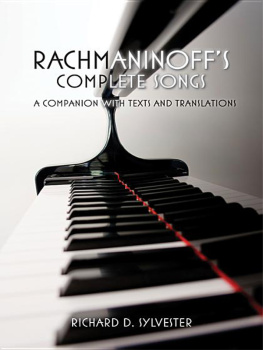
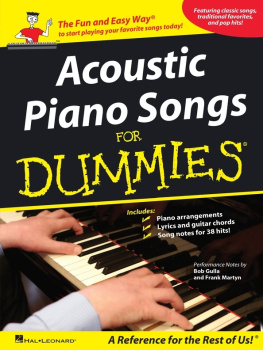
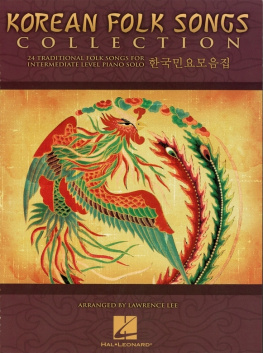
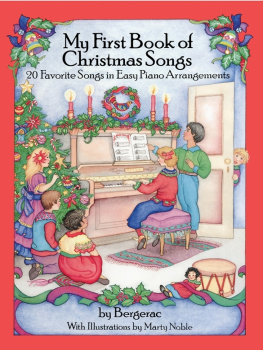
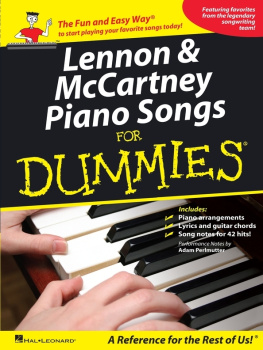

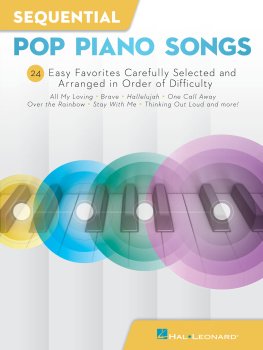
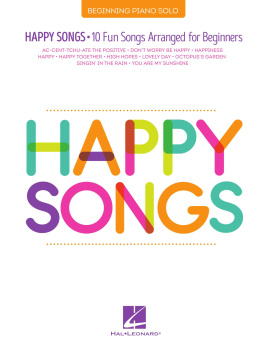
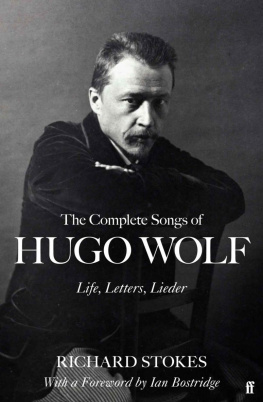
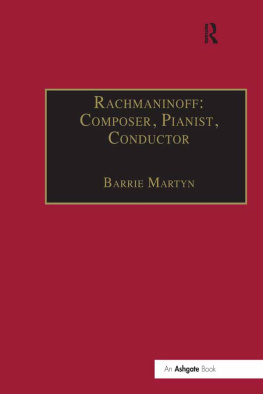
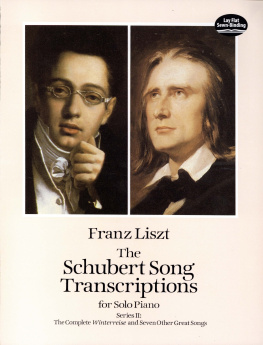
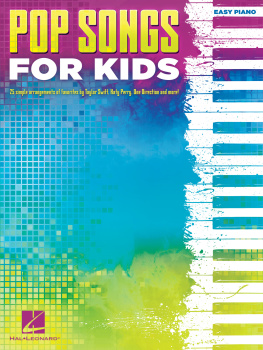
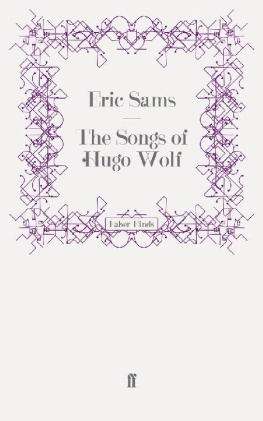



 The paper used in this publication meets the minimum requirements of the American National Standard for Information SciencesPermanence of Paper for Printed Library Materials, ANSI Z39.481992.
The paper used in this publication meets the minimum requirements of the American National Standard for Information SciencesPermanence of Paper for Printed Library Materials, ANSI Z39.481992.